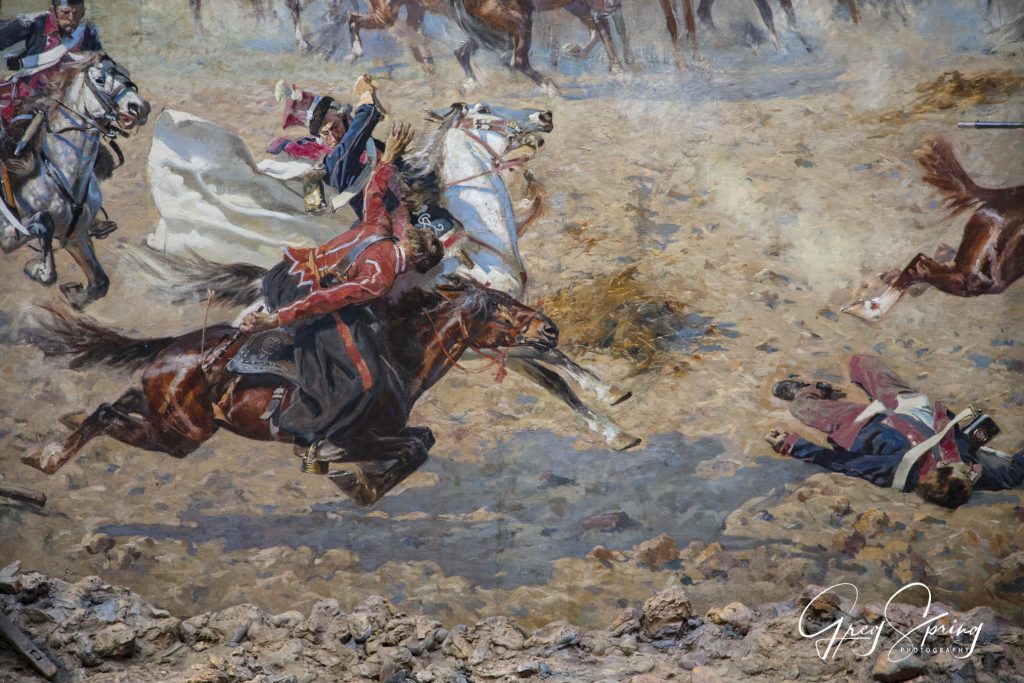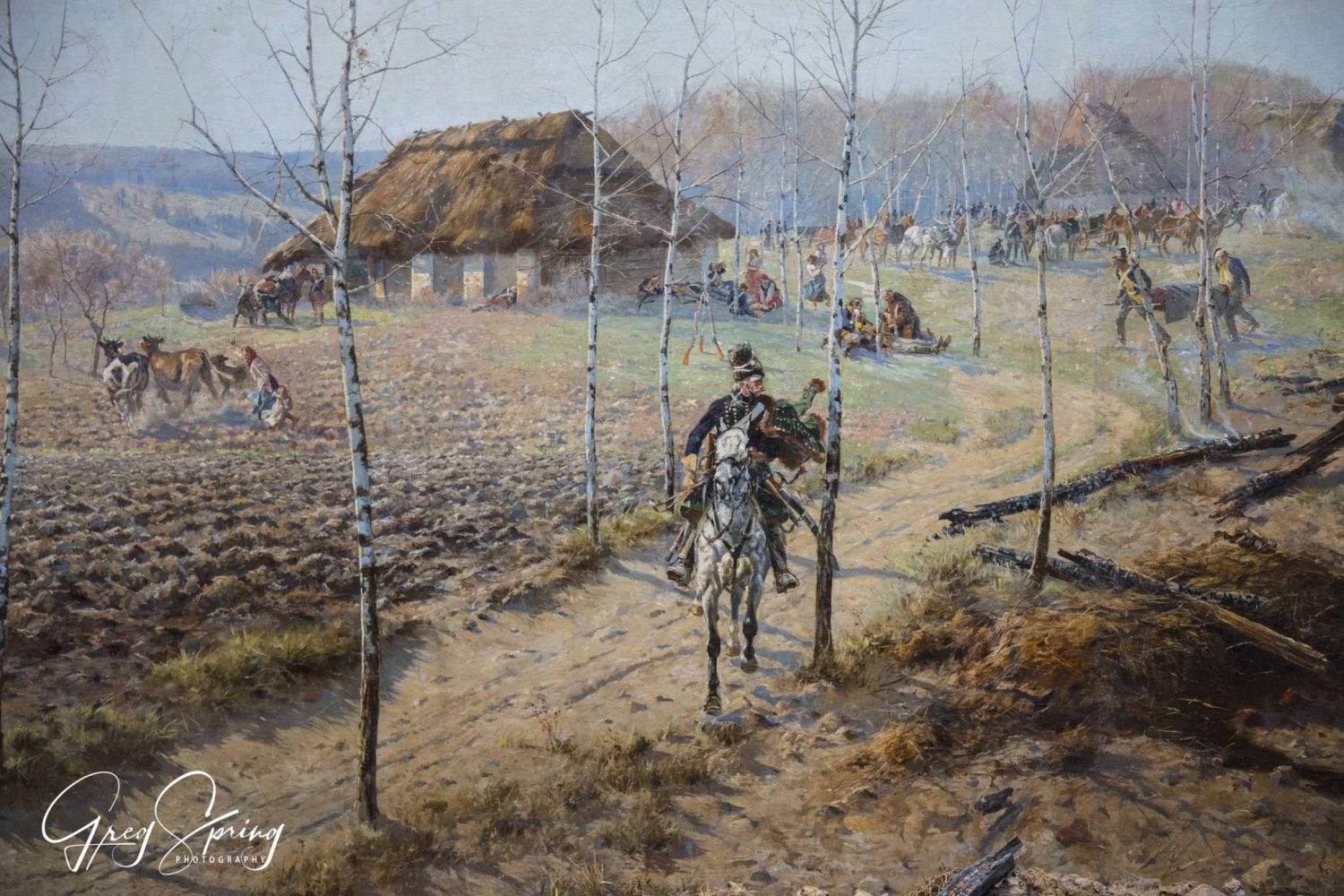Wrocław is a beautiful city with much to offer if and when you happen on an escapade through Poland. A unique attraction that you will not find in any other city lays in wait for you there. A small building built especially for one single painting, a 19th-century panoramic painting called ‘The Panorama Racławicka’. It is housed in a dramatic rotunda on (ul.) Purkyniego street. The Panorama Racławicka is a rare European example of a genre that is a Victorian phenomenon.
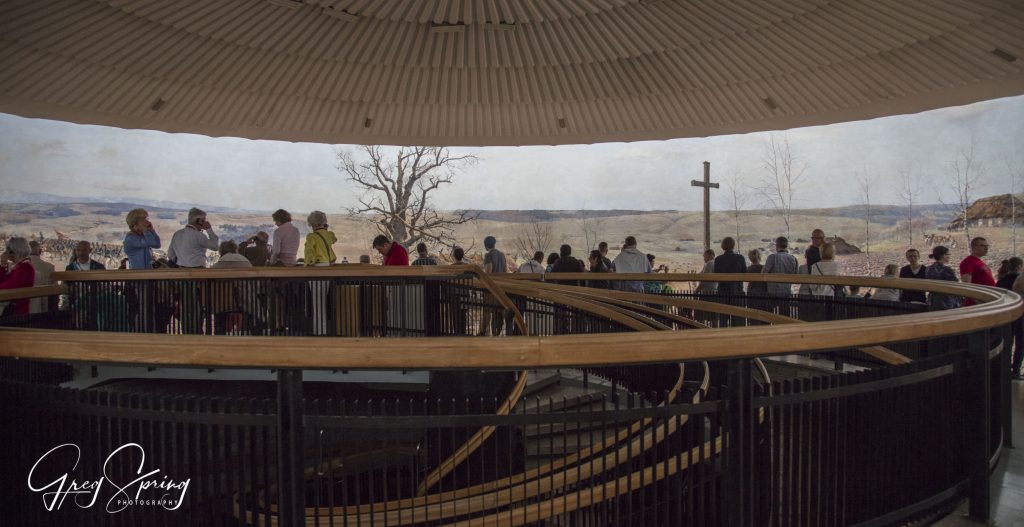
In the museum, the viewing platform is constructed as a ring that follows the circular contours of the rendered storyboard. When walking and musing on the platform in that circular path, you are transported into the center of what feels like the surreal reality of an 18th-century battle in progress. This effect is produced by the combination of a specially rendered perspective along with some interesting technical effects in lighting and artificial terrain.
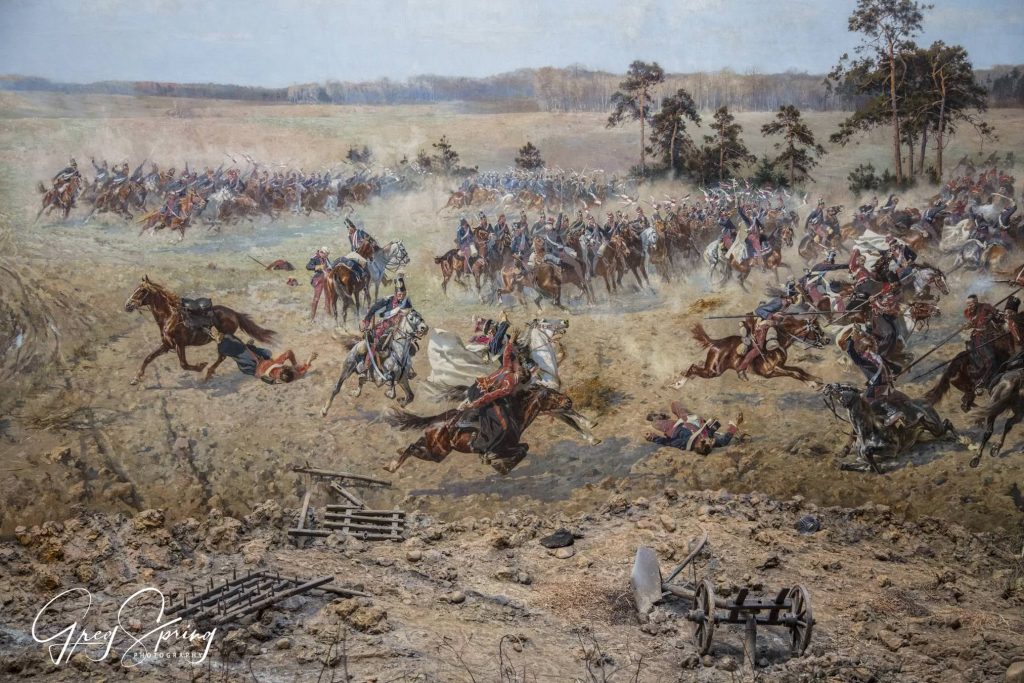
Notice the contrived objects placed in the foreground as they blend into the lower edge of the canvas for a 3D effect.
The canvas itself is gigantic measuring 15 × 114 m (49 f X 374 f). It depicts a scene, in full action, from a Polish Battle for Independence. This conflict was fought on the plains near a village called Racławice. It features a Polish hero, who is also a hero of the American revolutionary war, Tadeusz Kościuszko.
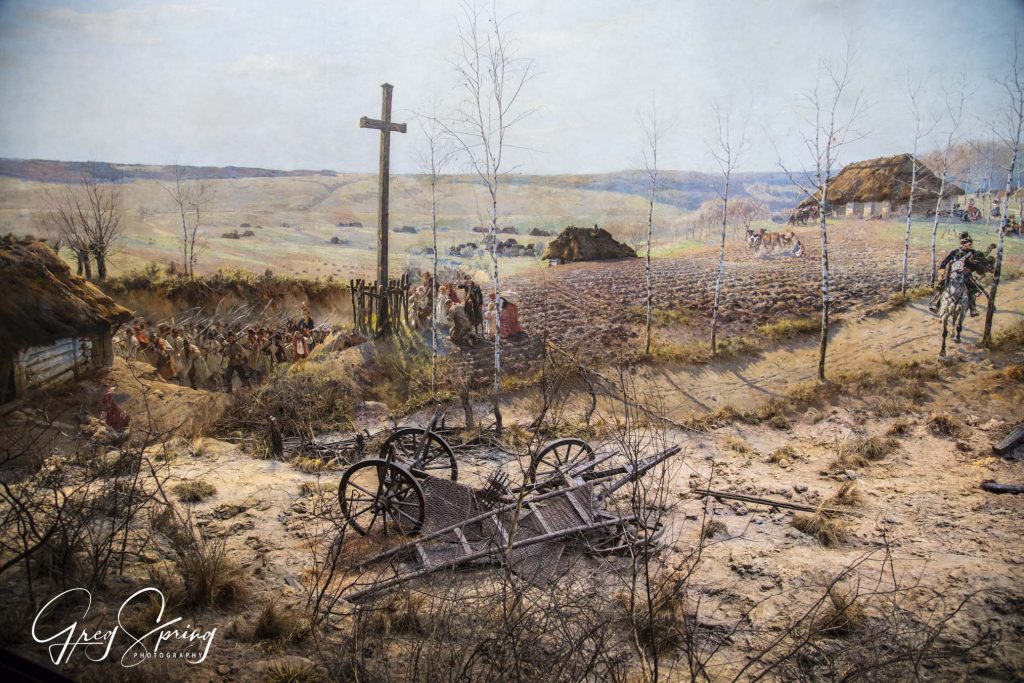
For the Polish nation which had lost its independence after the close of WWII, the memory of this glorious victory is very important. The Battle of Racławice was a heroic insurrection. After Kościuszko fought for the independence of the US colonies, he returned to Poland to defend independence in his home country and prevent the rending of Poland between three superpowers, Austria, Prussia, and Russia. Fought on April 4, 1794, this was one of the first battles of a sequence of battles against Russia that was called the Kościuszko Uprising.

Tadeusz Kościuszko, the hero in white, on his horse leading the peasant forces in full action sequence.
Poland fielded approximately 2,000 peasants armed with scythes, pikes, and cannons as well as an army of some 6,000 men all under the command of Tadeusz Kościuszko. The Russians quickly and unexpectedly organized an army to oppose him. He scored a victory by personally leading the infantry charge of the peasant volunteers. The outcome of the battle was a tactical Polish victory. The actual battle site is a national historic monument in Poland. The Kościuszko Uprising was suppressed the following November and, as a result, Poland’s borders disappeared from the map of Europe for 123 years under what is called the Third Partition.
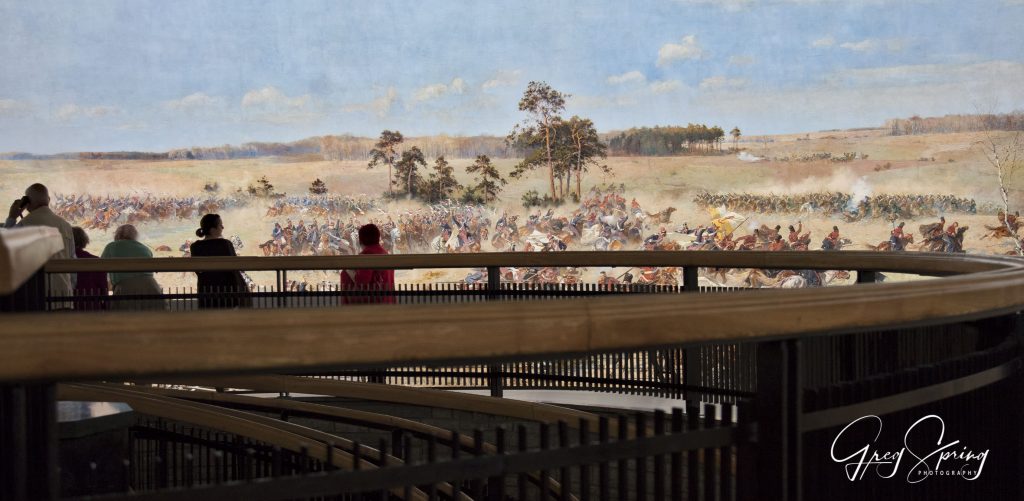
The Racławice panoramic painting is a stalwart old survivor of another war, World War II. It was created around 1893 in Lwów (then Poland now Lviv, Ukraine) for the centenary of the battle. It was a concept dreamed up and executed by Jan Styka along with Wojciech Kossak who was a master in the depiction of battles. After World War II and years of neglect, the painting was brought to Wrocław from Lwów in very poor condition. Under the Communist regime, Polish patriotic subjects were discouraged. In fact, art and literature depicting Polish victories over Russia, as this one does, were suppressed. As a result, the efforts to have the canvas restored and exhibited were executed with resistance over a 30-year period. The Panorama Racławicka museum was opened in July 1985 and is now an important tourist attraction in Wrocław.

There are some facts about Kościuszko that are important to cite as they speak to his heroic, and dedicated character. In 1796, Kościuszko emigrated to the United States where he was a close friend of Thomas Jefferson with whom he shared human rights values. In his last will and testament, Kościuszko left his U.S. assets for the education and freedom of U.S. slaves. He eventually returned to Europe and died in 1817. In the end, the execution of his will was difficult, and the funds were never distributed for the noble purpose he had intended.

The shadows created by objects placed in the foreground.
In addition to his achievements in the battles of the American Revolutionary War, Kościuszko was also an accomplished military architect who designed and oversaw the construction of state-of-the-art fortifications, including those at West Point.

At the Racławice panorama museum, one participates in a unique illusion. This Victorian technology might be something like contemporary 3D technology. Special, panoramic perspective, lighting and scenery constructed in front of the picture make it look multidimensional. Visitors can listen to the history of the painting and the events of the battle on an audio tour in 16 different languages. Walking in the circle in the dim lights on the raised platform there is a deep silence that pervades the room. I believe it is called ‘awe’ or deference. It is a little like being in a church and paying homage to a historic painting, a heroic event, and an iconic hero.
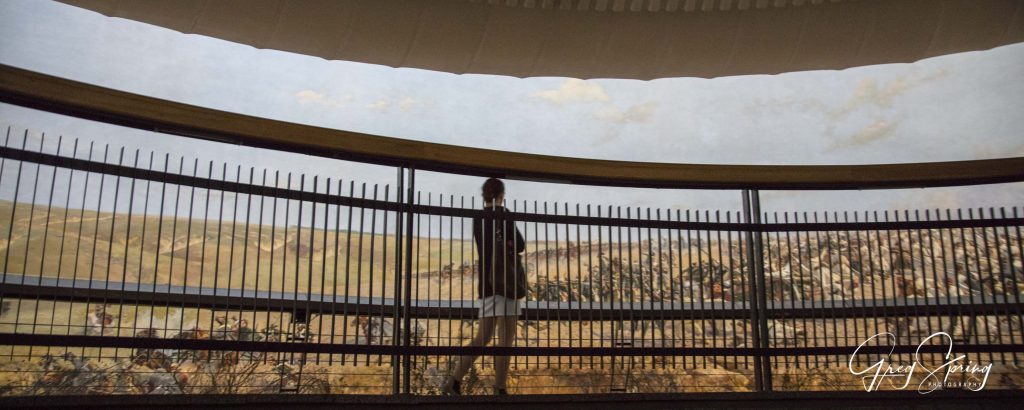
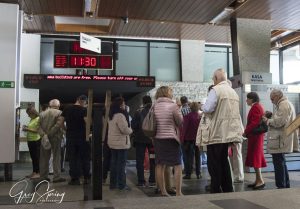
This is a small museum. Entrance to the rotunda is limited. Your ticket allows you entrance at a specific time for a controlled time limit. During high season, purchase your tickets in advance especially if you are planning a visit late in the day. Entry sometimes sells out for the day.

https://www.panoramaraclawicka.pl/?lang=en
https://en.wikipedia.org/wiki/Tadeusz_Ko%C5%9Bciuszko
https://en.wikipedia.org/wiki/Battle_of_Rac%C5%82awice
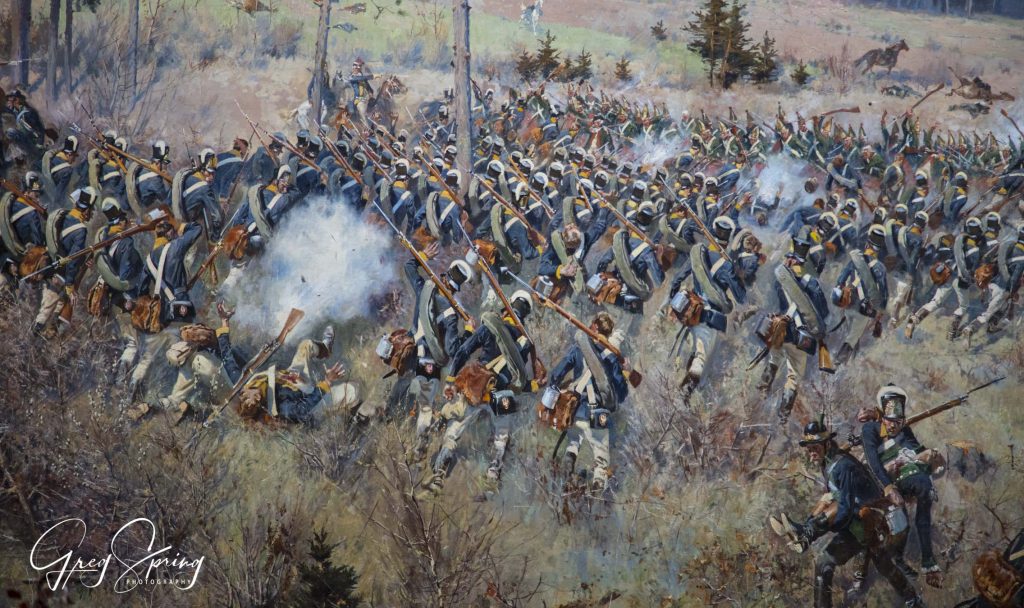

“Why Poland?” is a blog written and produced by Grace Nagiecka with photos by Gregory Spring. Kraków, Poland 2018.
We invite you to visit our other blog pages, “Wanderlusting Dreams” and “Greg Spring Photography”. Thank you for visiting.
